




Key Takeaways
- Role of LMS in Education and Businesses: Learning Management Systems (LMS) empower institutions and organizations to create, manage, and deliver personalized training and learning content, enhancing flexibility and scalability.
- LMS Market Growth: The LMS market is projected to reach $47.47 billion by 2030, driven by hybrid work environments, AI advancements, and increased reliance on digital learning.
- Key LMS Features: Effective LMS platforms offer multipoint access, gamification, personalized user experiences, social learning, analytics, and easy document management for better engagement and outcomes.
- Popular LMS Types and Use Cases: From web-based to mobile and enterprise LMSs, these tools are used for compliance training, onboarding, customer education, and skills development across industries.
Due to the sudden arrival of the Corona pandemic, schools, educational institutions, colleges, and universities were compelled to revamp conventional education models. Some of them have incorporated a digital approach and opted for online learning. At the same time, some institutions have leveraged applications and websites, but some of them have implemented customized learning management systems.
Why? Because Learning management systems allow higher educational institutions to design training programs and educational courses in their own ways, unlike well-known digital platforms and applications. Companies and organizations also use LMS implementation from various industries to train, reskill, and upskill workers by designing and putting complex training programs in place.
Now, there is no second thought that online learning is the future.
- The LinkedIn Workplace Learning Report suggested that more than 57% of educational departments are considering spending more time and budget on online courses in the coming years.
- Another research has revealed that more than 44% of businesses are likely to invest in online training courses and systems to make learning easy and interactive.
Today, practically every organization has or is about to receive a learning management system (LMS), including colleges and universities, coffee shops, and multibillion-dollar businesses. If you've never heard of a learning management system (LMS), you may have questions about what they are, why businesses use them, how your business may use them, and other things.
After going through this blog, you will know each detail about the learning management system. So let's begin without any ado.
Glimpse into the Learning Management System
Widely known as LMS, the learning management system has grabbed attention since its increasing adoption across various domains. But what is it actually? Implementation of learning management systems create, collect, manage and deliver online training materials to stipulated groups of people. Now, let’s go through what message is really conveyed through LMS,
L -Learning . This kind of application is developed and designed to make the overall learning process easy at any place. Students can enhance their learning through puzzles, practical exams and access a wide pool of knowledge sources.
M -Management - Along with learning, the platform has also the potential to manage files and make sharing easy. It allows admins to manage information, organise content and regulate how learners really understand it.
S - System. It's a management system that gathers and arranges various data types. By accumulating statistics, creating reports, and automating grading, it simplifies the training process.
Primarily, an LMS is used to easily track training and progress while delivering information and instruction to the people you need to reach.
But more is needed to fully explain what an LMS is and how it's used.
Because learning management systems are so versatile and strong, summing up everything they can do in a single sentence is challenging. The way they are used chiefly depends on the user.
Universities use online learning systems to deliver and manage courses in addition to K–12 education and traditional learning. Completely online courses are offered by several universities, and students frequently select them because they are convenient and allow for distant work. Colleges and other post-secondary education, whether academic or vocational, are related to this.
Both corporate compliance issues and small business training difficulties can be resolved with their assistance. Depending on the user's objectives. Following are some typical applications for an LMS platform,
- Provide instruction on business compliance
- Automate new hire orientation
- One platform for all learning and development resources
- Create courses for virtual corporate development initiatives
- Provide team-building and brainstorming exercises online
- Monetize courses and learning programs effectively
- Certification of users or staff
- Gamification and social learning can be used to modernize present training or learning and development tasks.
- Monitor student development
Although that is a sizable list, it is by no means all-inclusive. It's up to you how you use an LMS. Imagine it as a black sheet on which you are the artist. You can make use of the tools at your disposal to construct a vision for continuous learning, and growth that is unique to you.
Overall, learning management systems resemble your own personal online college. The solution lets you store online courses online, gives students access, and makes the evaluation process straightforward.
Eye-popping Statistics of LMS Software

The LMS market is anticipated to reach USD 47.47 billion by 2030 with a CAGR of 14.6% from its estimated value of USD 16.9 billion the year before.
The rise of online learning, a preference for bring-your-own-device policies, and the development of cutting-edge technologies like artificial intelligence (AI) and machine learning (ML) in LMS have all contributed to the growth of the learning management system (LMS) industry.
The various software and technology companies and firms operating in the worldwide LMS industry are profiting more as a result. More LMS model statistics are listed below.
- The global market for tech and smart classrooms is projected to grow at a (CAGR) of 16.2%, from $140.24 billion last year to $162.89 billion in 2023.
- Globally, there are currently estimated to be 73.8 million LMS users.
- Well-known tech companies purchase 30% of LMSs to meet their training requirements.
- Access to LMS programs is mostly done through desktop computers (89% of the time), laptops (78% of the time), and mobile devices (25% of the time).
- 76% of online students use their own devices to access course materials and training material.
The LMS industry is supported by many factors. On the one hand, we have to cope with the rise of remote or hybrid work in the workforce, which calls for a flexible and bilingual approach to employee development.
To sustain a constant information flow, large businesses and corporate training require a platform that is versatile and adaptive. Organizations continue to place a strong emphasis on the value of growth opportunities and the caliber of training, but they also consider cost savings.
Referring to the Learning Management System Market Size in 2023, technical improvements, the rising popularity of blended learning, data-based education, and government support for educational technology in some areas all contribute to the observed LMS growth.
Key Factors Affecting the Adoption of Learning Management Systems
One of the spheres of life where the growth of digital technology has had the biggest impact is education. With the explosion of eLearning, learning management systems (LMS) have emerged as crucial tools for promoting effective and efficient learning. The use of online learning still poses a significant barrier for many academic institutions and commercial entities worldwide.
The adoption of learning management systems is influenced by a variety of variables, and these variables may alter depending on the requirements and conditions of the business. However, we can name a few of the more effective and widespread ones:
Technology Infrastructure
The foundation for the effective deployment of LMS is the presence of a robust and dependable technology infrastructure. This includes having an adequate internet connection, the proper hardware, and an ongoing power supply. These essential resources are necessary for implementing Corporate LMS in many developing nations.
Scalability
Due to its ability to support a high number of users, LMS is appropriate for both small and large businesses.
Standardization of Training Materials
Collaborative learning is made simple and enjoyable by LMS, which enables the organization-wide standardization of training materials, guaranteeing that all employees or students are taught the same knowledge.
Interface design and simplicity of use
Users will only accept an LMS if it is extremely complicated or challenging to use. A user-friendly UI and practical features encourage LMS adoption. LMS vendors must therefore design the most interesting and user-friendly platform they can.
Regulatory Compliance
In some industries, businesses are required to give their employees a specific amount of training. An LMS may assist in guaranteeing that this training is given consistently and that its completion is correctly monitored.
Cost
The amount of money needed to purchase, maintain, and upgrade an LMS significantly impacts how widely it is used. While open-source LMSs offer less expensive options, they frequently need extensive customization and cannot have as many advanced features as their paid versions. Thus, institutions must strike a balance between expense and usability in their
Integration Capability
An LMS should have the capacity to integrate with current hardware and applications effortlessly. Having an incompatible LMS with other operational systems may encourage institutions to use it, reducing its utility.
in a nutshell, a wide range of variables, such as technological infrastructure, user literacy, usability, support and training, cost, integration potential, organizational readiness, and security considerations, all impact the adoption of an LMS. Successfully implementing LMSs and improving the learning experience depends on addressing these issues.
Understanding and negotiating these issues will be crucial in determining the direction of education in the future as the globe embraces digital transformation on a larger scale.
How Does Learning Management Systems Work? Let's Dig In
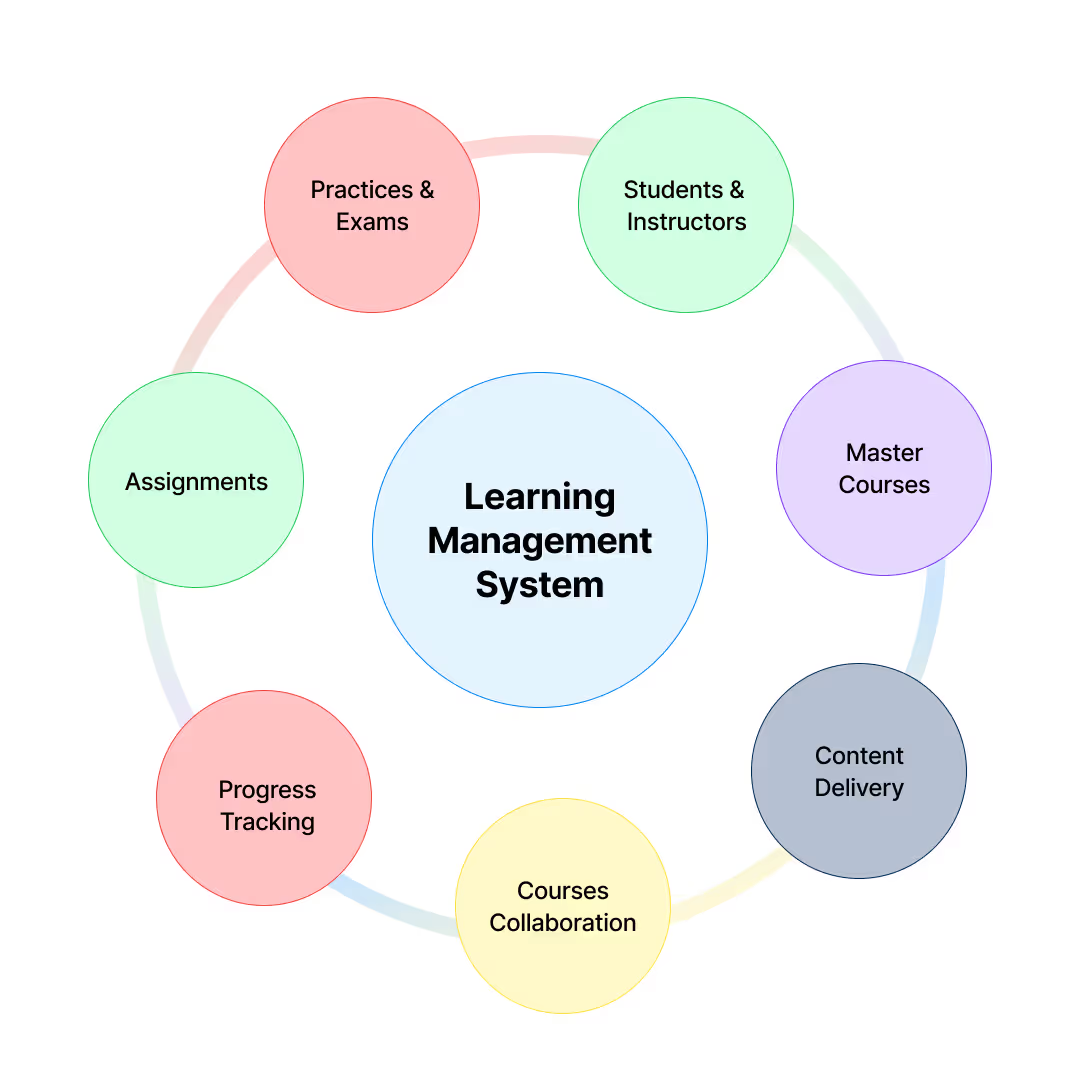
Think of a learning management system as a sizable website that can only be accessed by users who have logged in. On this "restricted" website, you have a choice between online or mixed communication with your students. Online education is comparable to distance learning, offered by institutions like the Open University, and involves students living off-campus and discussing learning materials with teachers and other students.
In blended learning, teachers and students interact in person, but LMS platforms support collaborative learning by offering a space where learning materials may be stored and organized, exams can be given, and students and teachers can communicate through blogs, forums, and other channels.
Because providing online learning opportunities to students is a learning management system's primary purpose, there are typically three different types of login possibilities (although there may be more, depending on your solution). The most typical are an admin login, a teacher login, and a student login.
As students work through the learning programs, instructors can monitor their progress and analyze their assessment results to ensure that the main learning objectives are accomplished.
LMSs can be installed as desktop apps, mobile applications, self-hosted applications, or cloud-based software. Depending on the size of your organization, the technical resources at your disposal, and the frequency of updates, there are a few standard LMS distribution methods.
Cloud software - Your LMS supplier updates and maintains the program in return for a regular subscription. They are usually based on user buckets or pay-per-user.
Licensing- For a licensing price, you can host the software on your own network or download it for as many people as you'd like. You might need to pay for updates and technical resources to build and maintain the system.
The list continues. And on. The top LMSs enable your learning leaders to delegate work to other users while preventing them from changing necessary platform settings. Organizational learning becomes a team sport as a result, which helps to advance greater business results.
Different Types of Learning Management Systems to Consider in 2023 & Beyond
Organizations need help maintaining their resources in the current knowledge race in a rapidly evolving technological environment. The online learning sector has seen significant growth in the technology industry.
Learning online, or LMS for short, is quite effective in the modern world.
Let's examine several management systems organizations might use to advance employee, compliance, and customer training. There are numerous features and ways to combine them in various learning management systems (LMS).
Web-based LMS
The seamless dissemination of information has changed thanks to the Internet. Developing web-based learning management systems was a logical step in technology development. Today's web-based LMSs are becoming more and more popular because they are instantly accessible in real-time on a variety of devices.
Web-based management systems are different in that they function mostly through browsers. It is transmitted via the Internet to your browser or web-based application. LMS vendors manage their programs and regularly update, enhance, and support the application. Compared to installed LMS software, web-based LMS software costs are typically meager.
SaaS (Cloud-Based) LMS
A SaaS LMS is hosted in the cloud, sometimes called a cloud-based or web-based LMS. It allows students to access training from any location, 24/7. A cloud-based LMS will enable learners to learn on the go, whether they prefer mobile, desktop, or tablet. All user data is stored in the cloud and made accessible as a service.
Most SaaS LMS providers offer customization choices to meet your training needs and various software integration features to connect with your preferred tools and create the finest learning environment.
Self-hosted LMS Platform
An LMS you install and operate on your own servers is a self-hosted LMS. As a result, you have total control over your data and may adapt your system to suit your unique requirements. But it also means that you're in charge of updating and maintaining your LMS, which may be a big job.
Your data is completely under your control. You won't have to be concerned about giving your data to a third party when you host your own LMS. The fact that all of your data is kept in-house can be crucial for regulatory or security reasons.
Open Source LMS
As the name implies, open-source LMS offers source code that may be modified to meet the unique needs of your business.
Although they frequently cost less and have a lot of flexibility, they burden your company with technical management and updates. This enables a great level of personalization and modification and, in some cases, makes it simple and easy to manage courses.
Closed-Source LMS
Unlike open-source LMS, closed-source LMS does not allow access to the source code. This can be the best option if you want an LMS for learning where you only need a little technical knowledge. Traditional professors prefer something other than this type of LMS because you must pay a license fee to use it.
On the plus side, it frees you from technical hassles because the LMS vendor will handle everything, including new upgrades and bug fixes.
A closed-source LMS is a proprietary piece of software that requires licenses for consumers to access it. You can spend more time enhancing the quality and managing your training content now that the IT headache is gone.
Extended Enterprise LMS
An enterprise LMS platform, as previously noted, focuses on training people who are part of your partner network. Partner Networks is the only industry with the same training difficulty: running training programs with many separate companies is challenging.
A partner or channel LMS, often an extended corporate LMS, includes specific features that handle the difficulties of delivering training to various audiences.
Every company has a special manner of conducting business that has contributed to its success. This includes special workflows and training content essential to their goal and cannot be modified to fit into an LMS that does not support them.
Whether you are training your expanded audience or not, an extended enterprise LMS is the ideal solution to this issue. These LMSs provide user interface and underpinning process customization to meet your unique company strategy.
Using extended business learning programs, you may manage online training courses, users, customization, branding, and regulations for each audience under one portal.
Mobile LMS
One of the most well-liked LMSs allows learners to access training programs on any platform, including smartphones, tablets, and desktop computers. These LMSs are becoming more popular in today's L&D endeavors. This solution allows instructors and trainers to build and deliver instruction anytime and anywhere.
The necessity for students to become desk-bound is eliminated as a result. Depending on their preferred pace and schedule, they can learn while on the go. You may instantly access and download training materials using a mobile LMS, which puts information at your fingertips and promotes improved knowledge retention.
Key Features & Functionality of a Learning Management System
Technology education is a fantastic thing. Technology, however, advances swiftly. Learning programs must adapt to the audience's evolving needs regarding technology.
Forbes claims that learner engagement will be key to the success of the next learning programs. Learner interaction is still seen by 90% of L&D experts as being the most crucial component of a contemporary LMS. After all, statistics provide a 202% performance advantage for organizations with high employee engagement.
Consequently, the following engagement-focused characteristics ought to be present in the right learning management system:
Multipoint Access
A decent LMS must be simple to use on a tablet, laptop, desktop, or smartphone. It should concentrate on more than just one platform. Additionally, rather than being app-based, it should ideally be browser-based.
Intuitive User Interface
Nowadays, the majority of customers leave slow websites and complicated mobile apps. Organizations want to learn management systems that users can access quickly and easily.
The LMS must be simpler to use, more accessible, and compatible with mobile devices. The simple user interface will persuade students to understand the course materials swiftly without any challenges. By requesting a free trial, businesses may quickly assess the user interface.
Communication & Collaboration
Through resources like discussion boards, messaging services, and chat functions, LMSs enable peer-to-peer interaction and communication between students and instructors.
Supporting LMS capabilities:
- Forum discussions
- Systems for direct messages and chat
- Tools for cooperation and file sharing
- Video calling feature for smooth interactions
- scheduling and event management abilities
Gamification
Since people enjoy playing games, this is one of the simplest strategies to encourage active learning and increase course completion rates. Different LMSs provide various gamification strategies, such as learner competition, simulations, a points system, and puzzle-solving. Other LMSs provide various gamification strategies.
Social Learning
Social learning is an important factor in increasing learner engagement and achieving better corporate outcomes. Based on the 70:20:10 model, 20% of what we learn is socially acquired.
The correct social learning elements can also support a community that shares knowledge and stop your company's intellectual property from leaving.
Given these advantages, it is clear why 73% of organizations anticipate increasing their emphasis on social learning.
Personalized User Experience
A well-developed LMS should offer information depending on a learner's history with the program and their function in order to promote greater adoption. For instance, a learner who works in sales must easily find further sales training materials in the LMS.
Users can prioritize areas for development thanks to adaptive exams and puzzles that consider a student's success during the course. Users are more engaged in learning if an LMS is tailored based on their choices and job function.
Reporting & Analytics
An LMS should include configurable reporting and analytics that align with your eLearning objectives to accurately assess the learner progress and efficacy of your learning programs.
By identifying the specific problems to solve, L&D professionals can improve training programs by using visual representations of learner data and customizable reports. Learning experts can modify their training programs by immediately spotting patterns. Artificial intelligence is crucial for sectors where conducting compliance training is a high priority.
Explore Options
Even for seasoned L&D practitioners, determining what your students already know can be difficult. Getting new hires up to speed quickly also enables them to contribute to the organization more quickly. Because of this, giving students the option to "test out" a training module can help them spend less time on it while also helping learning specialists better identify where each student is in their learning process.
Although a test-out feature allows learners to complete a final assessment rather than an entire eLearning module, you can still give them the necessary course resources to finish their training. If they pass, there is no need to take (or retake, in the case of some annual assessments).
Easy Management of Documents
It is also crucial in this situation with a management system. Regularly, learners and instructors upload and download document files to and from the LMS. They ought to be properly saved and kept for later usage and retrieval. The LMS should all support Word documents, Excel spreadsheets, PDFs, PowerPoint slides, audio and video files, etc.
Mixture Learning
The learning environment has undergone a significant change as a result of blended learning. At a never-before-seen rate, digital learning solutions are being adopted. However, a recent Wall Street Journal article stated some of the drawbacks of online learning that are entirely published. Educational institutions need to prepare to say goodbye to in-person classroom training sessions.
What, then, is the outlook for education? The solution is integrated education. This strategy combines classroom instruction with online learning to provide the best of both worlds.
And the outcomes support it! According to research, mixture or blended learning can improve student performance. Additionally, statistics demonstrate that blended learning can increase engagement by 73%! The top LMSs will have options for managing classroom (or webinar) bookings in addition to online learning capabilities.
Key Benefits a Learning Management System Drives to Organization
Constant technology innovation has changed some business-related issues, including training. One example is implementing significantly more effective learning programs adapted to the organization's needs. It's important to comprehend the advantages of LMS platforms for this reason.
A learning management system, or LMS, is a technology that tries to solve knowledge management and provide fresh opportunities for engagement. This advances the potential of online learning. The ability to offer online courses with excellent information management has made it feasible, entirely altering the laws of e-learning. What benefits does this kind of platform bring to the table, though? Let's discuss.
Increases Flexibility
The development of blended and hybrid learning has significantly revamped the typical classroom experience. With blended learning, students can attend in-person lectures while supplementing their education with readings from the LMS.
The learning management system content could include readings, notes, lectures that were videotaped, lesson plans, and much more.
Conversely, hybrid learning gives students even more flexibility by enabling them to attend classes in person or online and supplement that with course material on an LMS. You can access the online courses directly from the LMS. Students are free to choose how they want to show up for class. Due to the flexibility, it is simpler for students to maintain regular attendance and minimize disruptions.
Scalable
Your onboarding process must be consistent whether you are onboarding a single employee at a time, small groups, or large teams. Your LMS makes managing large groups of workers simple, and unlike traditional offline training, the expenses are fixed regardless of how many additional employees you add.
Your LMS is expandable and can accommodate hundreds, not thousands, of new students. And as was previously mentioned, LMS automation enables each of these new learners to automatically receive the learning roadways that are best for them, when they are needed, in the order that they are needed, and on the device of their choice.
Level Customer Service & Sales
You can teach clients about your company's core products or services to boost sales or customer onboarding processes by integrating your LMS with your customer relationship management (CRM) system.
For instance, you may provide sales training to clients who have bought your product and prospects at a specific level in the buying process.
You may also use your integration to fulfill any learning requirements in your CRM or LMS. As a result, your staff members may perform better in sales and customer support. For example, you can automatically sign up sales staff members to receive updates on product features and benefits presentations.
A recurring customer training lead may also be required of personnel in response to persistent customer service inquiries or complaints. In this case, the company's learning initiatives could act as a source of knowledge and skill-building tools that address developing issues on the company's internal and external fronts.
Reduce Learning Time
An effective learning management system can shorten each employee's learning period by training employees and supplying them with pertinent knowledge and resources. Employees can skip protracted online courses to learn new information. They can access pertinent information by gaining access to their preferred online learning modules.
Along with content, an LMS platform may keep online students glued with various other tools, including online tests, regular quizzes, competitions, and eLearning videos. For instance, learning programs in the manufacturing industry can make complex tasks like configuring a new machine or fixing a tricky machine issue simpler.
Reduces Employee Turnover
One of the main benefits of LMS for businesses across sectors is lower employee turnover. On average, organizations invest more money in finding new talent than in keeping their current personnel. Teachers can raise student engagement through the use of an efficient online learning management system:
- Investing in their total education and growth.
- Allowing them the freedom to pursue new endeavors at their discretion.
- Supplying them with individualized learning resources pertinent to their line of work.
- Follow and observe their educational development.
Organizations must invest in the appropriate solution to exploit an open-source LMS.
Update Online Training Courses Effortlessly
There used to be very little that could be modified in the course content once a course plan was created and resources were distributed to students without a significant revision of all study materials.
Thanks to LMSs, that process is now a lot easier. Online courses can flow more smoothly when instructors change lesson plans as they go. Students can modify the own pace of the system based on how well they respond to it. The content of lectures can be changed at any moment, and extra or less study material can be included. Learning management systems in higher education institutions enable students to stay current with whatever modifications may be made.
Saves You From Data Breaches
Data breaches and security concerns are a top worry for companies of all sizes in the present digital world. When training and developing new employees, it is crucial to guarantee the confidentiality and protection of sensitive data.
You can ensure that all sensitive information is safeguarded, secure, and only accessible by authorized individuals by using an LMS for online training.
Put another way, it can offer role-based access control, ensuring users have only the information and resources required to do their jobs. As a result, there are fewer chances of data breaches, and illegal access is prevented.
A learning management system may also offer tracking and reporting capabilities that enable you to monitor user activities and spot any security risks.
For example, you can keep track of active user login activities, keep an eye on course completion rates, and spot any unusual behavior. This makes it possible for you to react promptly to any security issues and take the required precautions to reduce the risks.
Best LMS Use Cases to Consider
Many businesses are hesitant to convert from traditional training to online training because they are still determining the ROI potential. Finding an LMS that enables them to create courses, deliver, and track their L&D activities takes a lot of time and effort.
You might need to be aware of some additional uses for learning management systems. Applications that can improve the business case you provide to stakeholders and highlight the advantages a new course management system can offer.
Here are the top LMS use cases you should consider when determining if an LMS is cost-effective.
Compliance Training
Training the personnel on the organization's most recent rules, procedures, and regulations is essential for highly regulated businesses like healthcare. Employees must stay current on compliance requirements to reduce training expenses and improve employee safety.
Personalized e-courses on compliance, health, and safety are delivered across various mobile devices by modern LMSs. This produces automated reports to monitor user performance, progress, training completion, and other factors. Compliance training increases brand value, boosts learning effectiveness, and lowers training expenses.
Higher Educational Institutions
LMSs are frequently utilized in higher education to provide students with online courses and materials. Instructors may develop and manage online course lessons, materials, assignments, and assessments on a single platform with the help of LMSs, allowing them to monitor student progress. Online access to course materials, discussion forums, and assignment submissions are all available to students.
Customer Training
Extended enterprise LMS platforms have a division that is dedicated to client training. Even gamification and support services may be included, allowing you to build a loyalty rewards program.
For instance, consumers who complete courses in your online product knowledge training course receive additional bonuses. Giving your customer base ongoing support resources boosts the likelihood of repeat business and word-of-mouth promotions.
Soft Skill Training
Professionals must have a robust set of soft skills. However, teaching staff members soft skills might be difficult. Some workers might not be driven to develop their soft skills. Additionally, if the training content in the soft skills training program is not highly interesting, it might not be successful. A learning management system (LMS) can be useful in developing online training courses for subjects like leadership, communication, time management, etc.
Sales Productivity
LMSs can also be used with sales enablement to help with sales onboarding and give sales teams the information and resources they need to meet their goals. This is in addition to employee onboarding and training. They can also benefit from an LMS platform for training in sales techniques and new product releases.
Sales training is crucial because it enables teams to enhance client interactions and close more deals. An LMS that offers sales training provides salespeople with a road map for success as well as the freedom and flexibility to perform activities in a manner that is better suited to their obligations in both their professional and personal lives.
LMS can therefore assist both office-based and remote employees in completing their training and upgrading their abilities in a more flexible time period. This illustrates how LMSs can be useful for both in-office and off-site workers who want to complete training with remote learning and advance their abilities over time.
Examples of well-known LMS Available in the Market

There are lots of LMS platforms available in the Market; each comes with different LMS features and benefits. In fact, only some of them are widely used in the Market as they create immersive learning experiences and provide valuable insights to organizations.
The most widely used learning management systems available right now are listed below:
EdisonOS
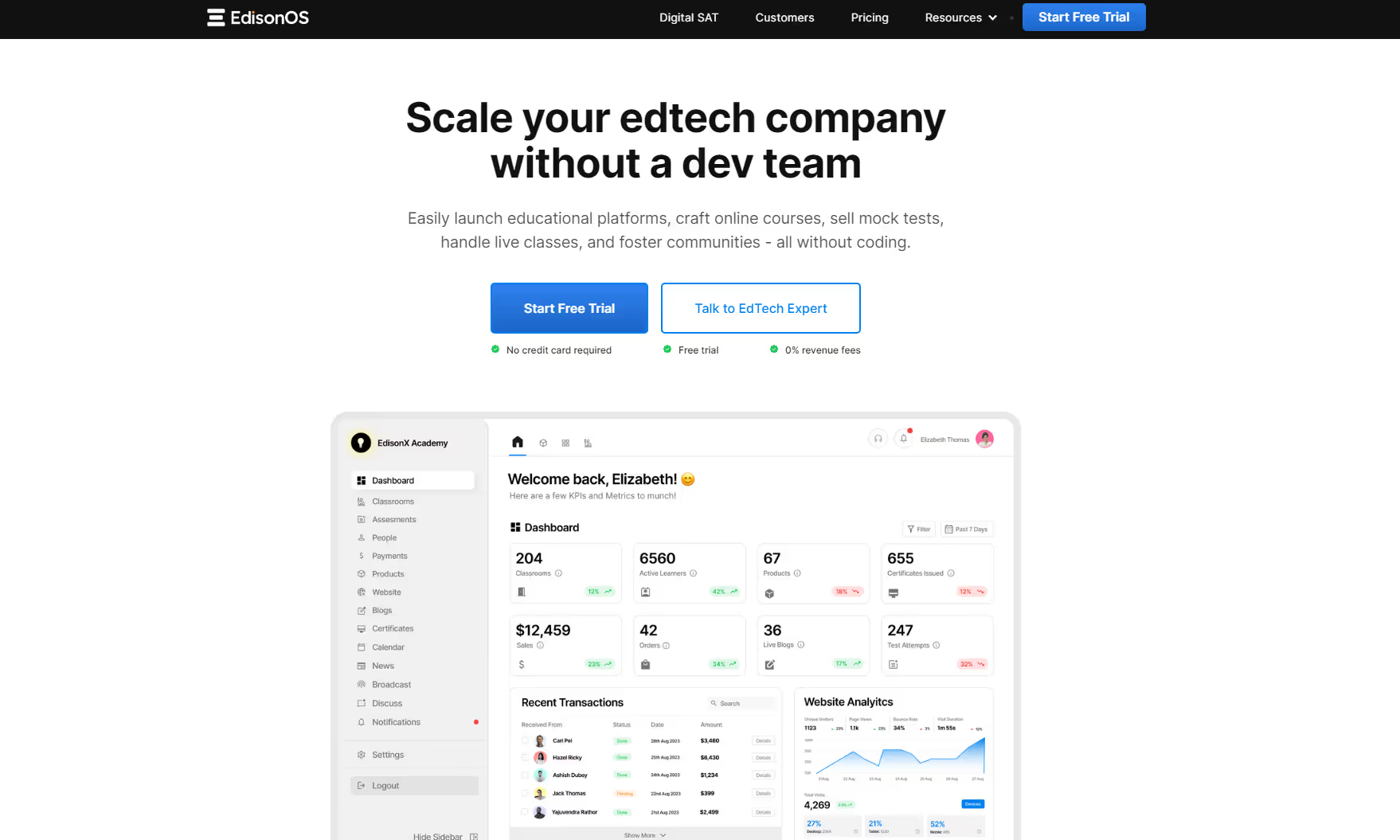
EdisonOS stands out in the LMS landscape as a comprehensive edtech platform tailored for the digital age. It has a list of key features that are a no-brainer to have in any LMS platform to scale and build a "PERFECT LEARNING EXPERIENCE".
Key Features:
- Course Creation: User-friendly tools for crafting interactive courses with over 50 content options like flashcards and quizzes.
- Live Classes: Real-time sessions fostering community and engagement.
- Assessments: Intuitive creation of mock exams and tests.
- eCommerce Integration: Seamless setup for course monetization.
- Community Tools: Features like discussion forums and chatrooms to enhance learner-instructor interaction.
- Analytics: Robust tools for tracking student progress and course performance.
Use Cases:
- Individual Experts: From astrologers to chess coaches, professionals can share their expertise.
- Educational Institutions: Offer supplemental resources and blended learning opportunities.
- Corporate Training: Equip employees with industry-relevant skills and knowledge.
- Freelancers & Entrepreneurs: Launch online workshops or masterclasses in their niche.
- Non-profits & NGOs: Provide training and awareness programs to volunteers and communities.
- Government Initiatives: Implement e-learning modules for public services and community education.
- Hobbyists & Enthusiasts: Share passion projects, from photography to DIY crafts, with like-minded learners.
EdisonOS seamlessly blends user-centric features with community engagement, making it a go-to choice for diverse e-learning needs, from individual pursuits to large-scale institutional requirements.
Canvas LMS
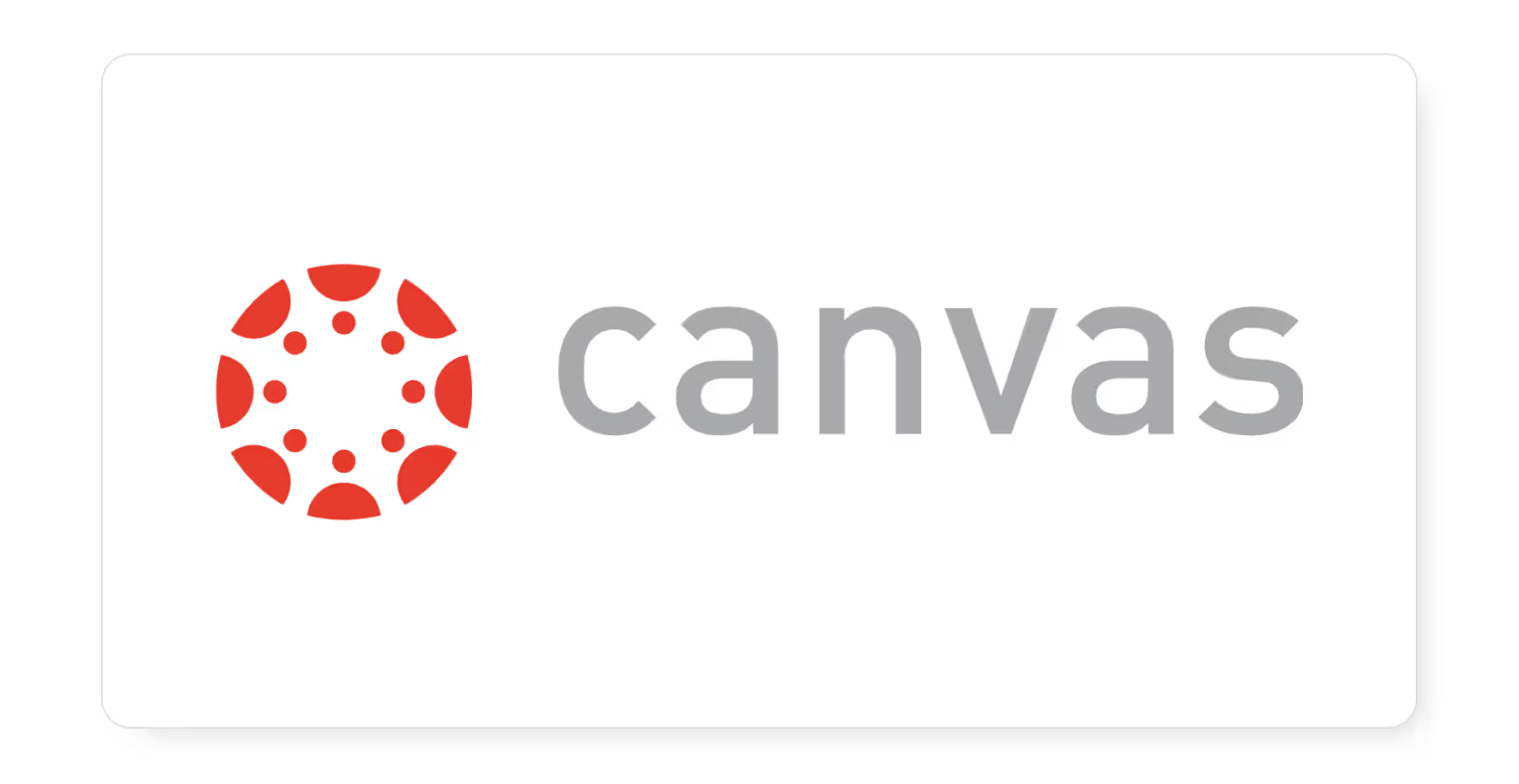
Canvas LMS is an all-in-one digital foundation system for all facets of education that is open and extendable.
Canvas makes it simple to communicate between teachers and students, manage active enrollments and assignment submissions, share course materials, promote messaging exchanges between students and teachers, and save course and institutional syllabus information that is accessible to all.
Blackboard Learn
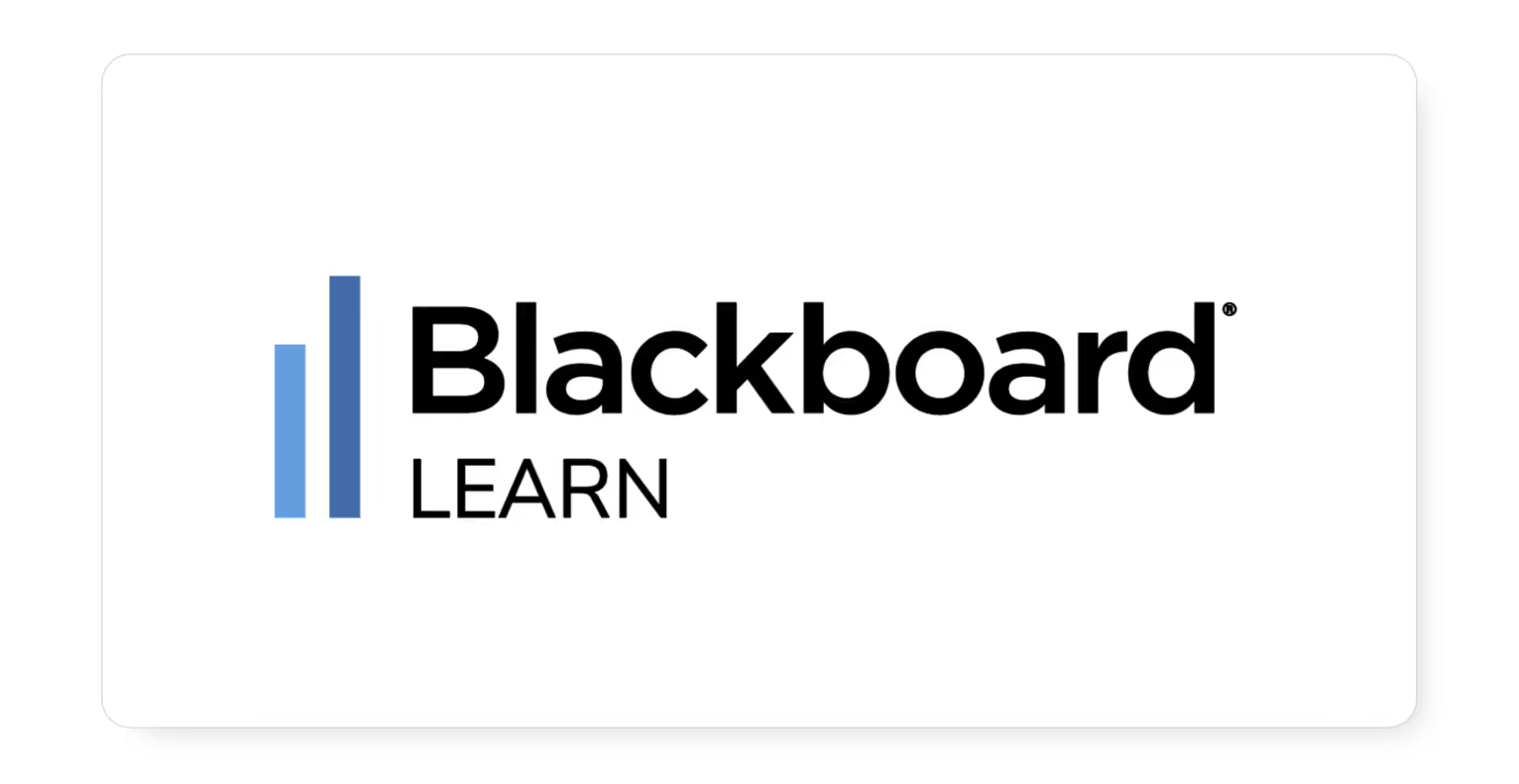
It can be difficult to manage a large workforce, especially if your workers must collaborate closely while being distant. No matter where they are studying, collaborating learning tools like group messaging, virtual classrooms, and discussion boards enable employees to stay engaged throughout the learning experience.
With its user-friendly interface, Blackboard, our top choice for this feature, keeps all users informed. The user can:
- To have discussions and share knowledge, use discussion boards, commonly called message boards.
- Share PDFs, videos, course links, and question banks.
- Interact with classmates and teachers via two-way messaging and a central group chat.
- Add notes or annotations to documents, pictures, and other course materials.
Moodle
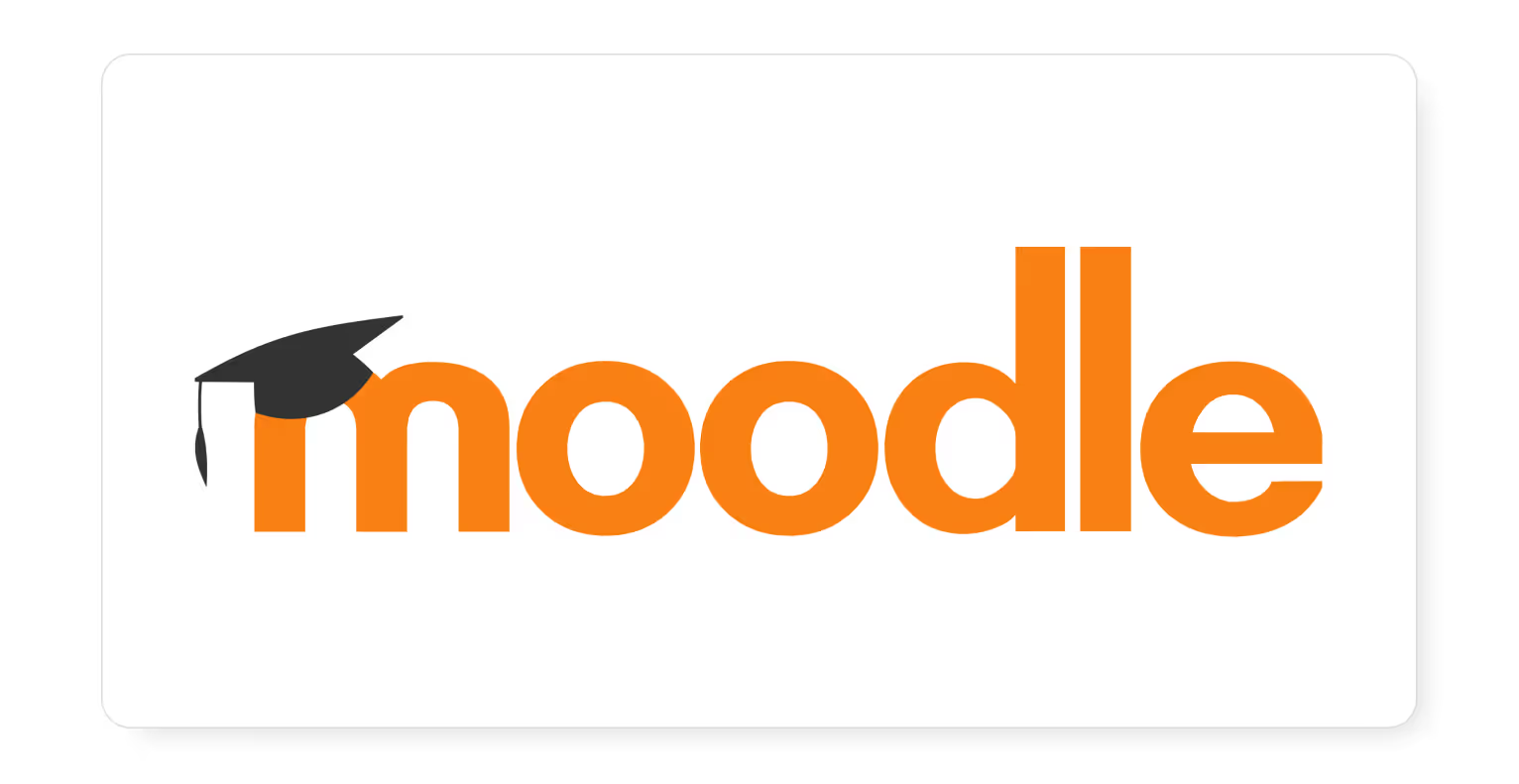
Moodle is a well-known learning management system created to offer instructors, administrators, and clients a single robust, secure, and integrated learning platform for creating personalized learning platforms for their clients.
It provides several dynamic learning opportunities at any time and at any place. It can be used for learning as well as the teaching profession.
TalentLMS
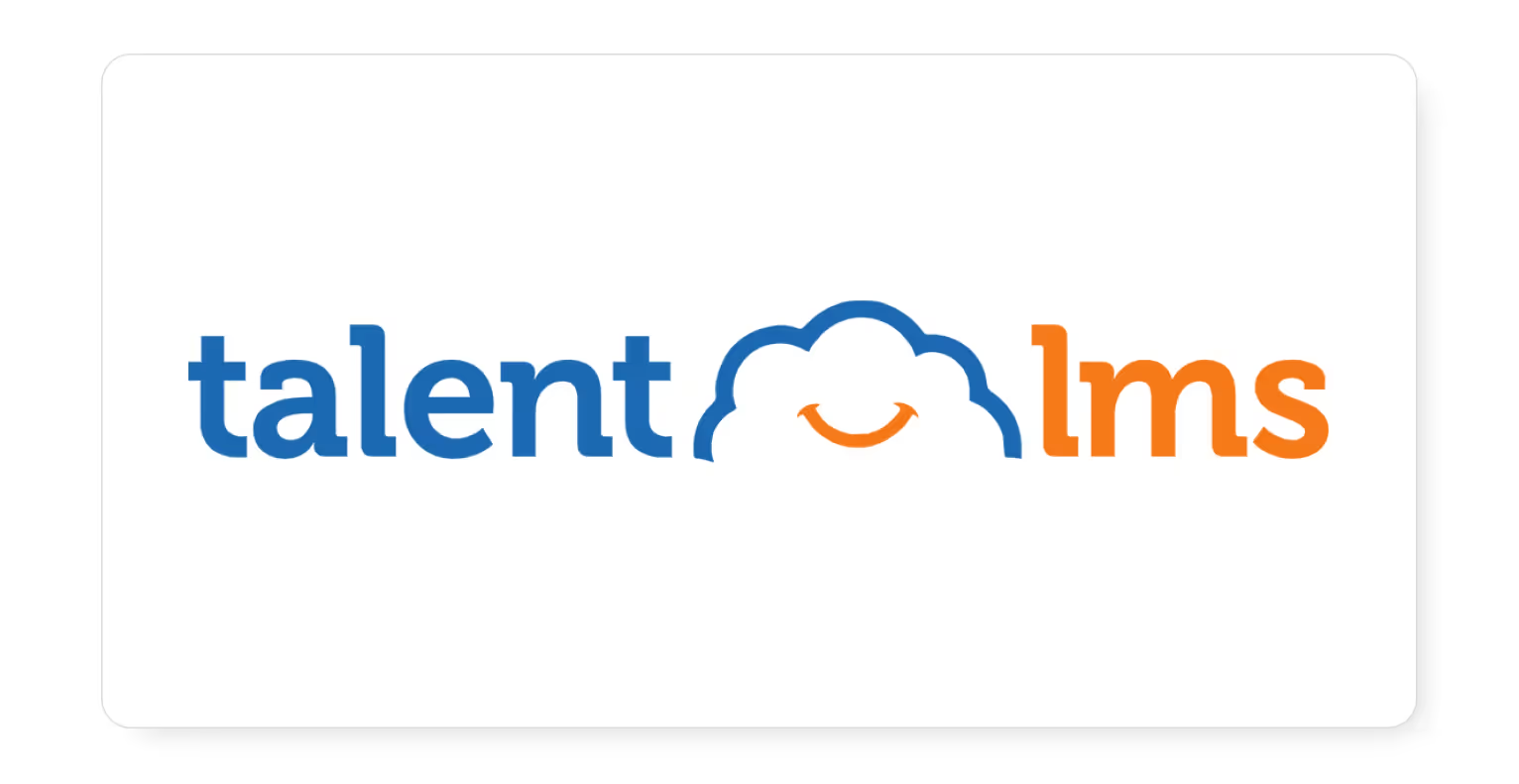
Boring course material is one of the most significant hazards of training programs. It is challenging to engage students in uninteresting courses. Consider this: If you were a student, wouldn't you prefer to watch a three-minute animated film over reading a ten-page PDF?
Your staff will learn more effectively if you create interactive graphics, multimedia components, and customized content for your eLearning courses.
Paylocity
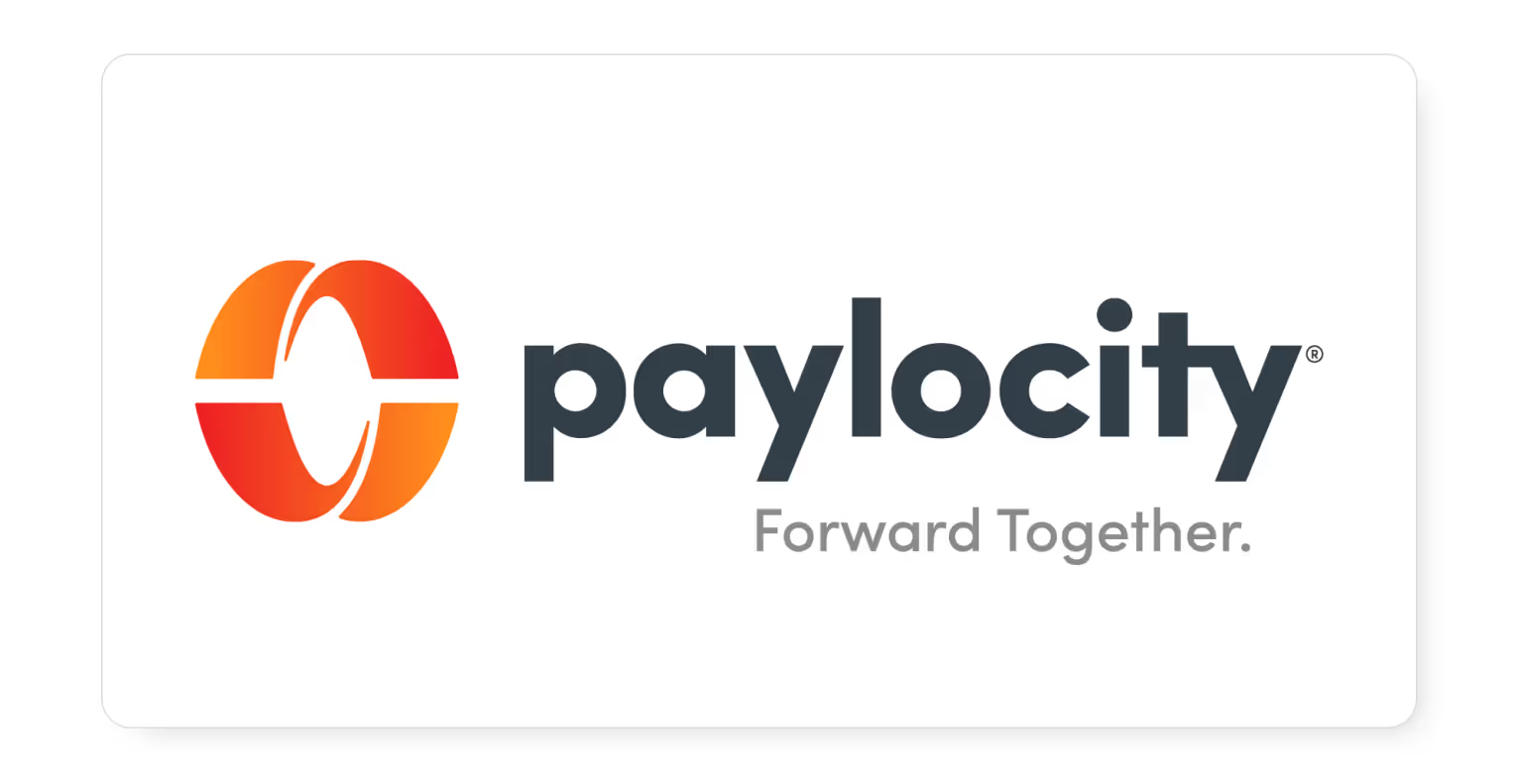
Paylocity offers courses to workers designed to instruct staff on new procedures, guidelines, and products, among other things. Using the application, subject matter experts may produce bite-sized microlearning modules and disseminate their knowledge to their peers. Paylocity's mobile app, which enables employees to take learning on the go, is one of its main draws.
Wrapping Things Up
In conclusion, LMS implementation is pivotal for businesses that wish to provide top-notch employee training and enhance the expertise of their personnel. When choosing an LMS, organizations should consider their learning objectives, employee training needs, cost, scalability, user experience, vendor support, security, and compliance.
Careful planning, content creation, user training, rollout, and launch are all necessary for an LMS implementation. Organizations may make the most of their LMS by adhering to best practices, including producing exciting content, promoting collaboration, providing tailored and learning tools interoperability, monitoring learner progress, and continuously upgrading while honing new skills.
Designing an eLearning platform that properly fits inside your company's learning programs & development and business model is possible with custom LMS development. A custom LMS is more expensive to implement since it offers greater flexibility, so it's important to consider whether it's the best option for your organization.
Indeed, the learning management system is the bedrock of all forms of education. If you are facing any issues, why not try EdisonOS today and see how we can uplift your e-Learning content and smooth operations?

Tutors Edge by EdisonOS
in our newsletter, curated to help tutors stay ahead!
Tutors Edge by EdisonOS
Get Exclusive test insights and updates in our newsletter, curated to help tutors stay ahead!












.png)
.webp)
